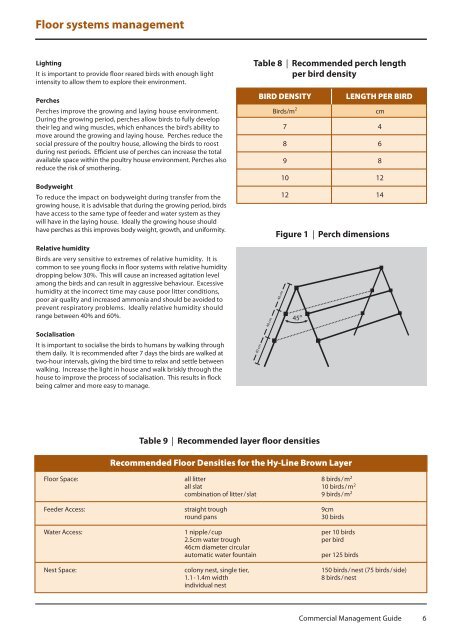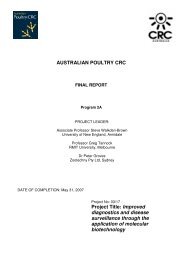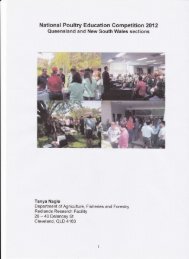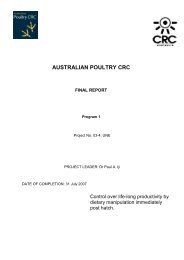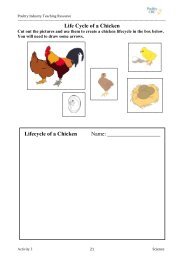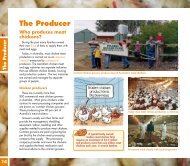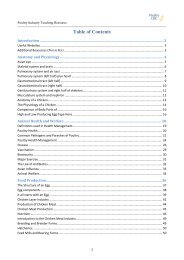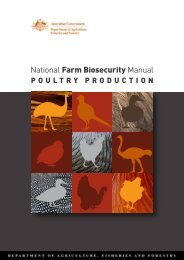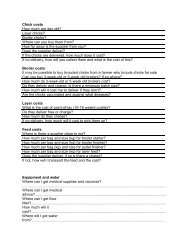Hy-Line Brown Commercial management guide - Poultry Hub
Hy-Line Brown Commercial management guide - Poultry Hub
Hy-Line Brown Commercial management guide - Poultry Hub
You also want an ePaper? Increase the reach of your titles
YUMPU automatically turns print PDFs into web optimized ePapers that Google loves.
Floor systems <strong>management</strong>LightingIt is important to provide floor reared birds with enough lightintensity to allow them to explore their environment.PerchesPerches improve the growing and laying house environment.During the growing period, perches allow birds to fully developtheir leg and wing muscles, which enhances the bird’s ability tomove around the growing and laying house. Perches reduce thesocial pressure of the poultry house, allowing the birds to roostduring rest periods. Efficient use of perches can increase the totalavailable space within the poultry house environment. Perches alsoreduce the risk of smothering.BodyweightTo reduce the impact on bodyweight during transfer from thegrowing house, it is advisable that during the growing period, birdshave access to the same type of feeder and water system as theywill have in the laying house. Ideally the growing house shouldhave perches as this improves body weight, growth, and uniformity.Relative humidityBirds are very sensitive to extremes of relative humidity. It iscommon to see young flocks in floor systems with relative humiditydropping below 30%. This will cause an increased agitation levelamong the birds and can result in aggressive behaviour. Excessivehumidity at the incorrect time may cause poor litter conditions,poor air quality and increased ammonia and should be avoided toprevent respiratory problems. Ideally relative humidity shouldrange between 40% and 60%.SocialisationIt is important to socialise the birds to humans by walking throughthem daily. It is recommended after 7 days the birds are walked attwo-hour intervals, giving the bird time to relax and settle betweenwalking. Increase the light in house and walk briskly through thehouse to improve the process of socialisation. This results in flockbeing calmer and more easy to manage.Table 8 | Recommended perch lengthper bird densityBIRD DENSITYBirds/m 240 cm 40 cm 40 cm7891012LENGTH PER BIRDcm4681214Figure 1 | Perch dimensions45 oTable 9 | Recommended layer floor densitiesRecommended Floor Densities for the <strong>Hy</strong>-<strong>Line</strong> <strong>Brown</strong> LayerFloor Space:Feeder Access:Water Access:Nest Space:all litterall slatcombination of litter/slatstraight troughround pans1 nipple/cup2.5cm water trough46cm diameter circularautomatic water fountaincolony nest, single tier,1.1-1.4m widthindividual nest8 birds/m 210 birds/m 29 birds/m 29cm30 birdsper 10 birdsper birdper 125 birds150 birds/nest (75 birds/side)8 birds/nest<strong>Commercial</strong> Management Guide 6


